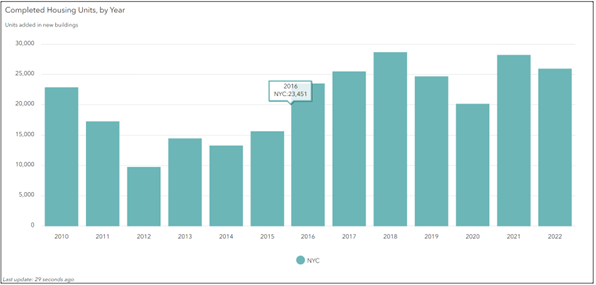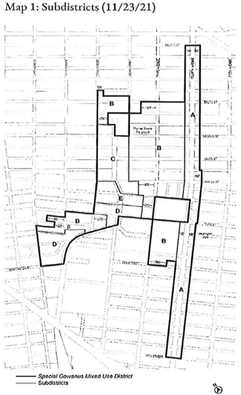Hochul’s 421 a substitute explained
New York Governor Hochul has announced two key plans she hopes to get passed – without the need for legislative approval. Today, I will cover the second of the two initiatives I brought up last week – the 421 a work around. I will break down the history behind it and what it may mean for development in NY going forward.
Background
Last summer, developers across NYC rushed to excavate and insert initial footings on project sites prior to June 15th to secure their eligibility for the 421 a tax abatement. Those savvy (lucky?) enough to meet that deadline soon realized that there were actually two deadlines to meet. Not only did developers have to start construction by June 15th, 2022, but they also had to finish their work by June 15th, 2026 in order to get reduced taxes. This didn’t pose a problem for boutique developers building on low-medium density parcels of land, but a four-year timeline was cutting it close for builders working on larger projects. Lenders started getting the heebie-jeebies. For a developer to fail to secure the 421 a tax abatement would mean a significantly higher expense structure on an asset. Not having a tax abatement would seriously scramble financial projections and sow doubts in the ability of projects to cover debt service. Banks and alternative lenders didn’t feel comfortable lending on projects if their completion date was even within a year of the 2026 deadline. On top of this, interest rates on loans have increased significantly since last summer. The result was that construction on many sites froze across Manhattan and Brooklyn.
Nine months prior to the abatement’s expiration, Gowanus, Brooklyn underwent its largest rezoning to date, covering 82 city blocks. Developers across the borough of Brooklyn had made plans to purchase property in Gowanus, file permits for building, and tap construction lenders for financing. Reports came out and estimated that the rezoning could facilitate the construction of around 8,500 additional units of housing in Gowanus, 3,000 of which would be affordable. To put it into perspective, approximately 25,936 housing units were completed in 2022 in NYC. Gowanus developers could make a major contribution to the housing stock of NYC with their efforts.

The potential damage that the tax abatement expiration could have on the housing supply in NY, coupled with all the plans and excitement for the future of the Gowanus neighborhood formed the grounds for an important policy response.
Overview:
The Governor’s new program aims to redress the problems that surfaced after the 421 a tax abatement expired and failed to get renewed. It is only available for developers with properties within the Gowanus rezoning district who have 421 a eligible sites.
Developers would submit proposals to Empire State Development, “The State.” The State would select some sites that fit the needed criteria and then perform sale-leasebacks. That is, The State would buy properties from the owners for some small fee and then master lease the properties back to the owners for the duration of the 421 a benefit period. In exchange for agreeing to this, owners would make lease payments equivalent to the reduced taxes they would have paid under a 421 a tax abatement. This would allow the true owners to collect rents on their properties. At the end of the 421 a benefit period, The State would hand the properties back to the true owners.
Some additional requirements of the program are as follows:
Properties must be in the Gowanus rezoning area
Properties must have gained eligibility for the 421-a(16) program
Properties built must have plans to be larger than 50 housing units
Properties must make a segment of the units affordable into perpetuity
Project managers must draw a certain share of contractors from minority and women owned businesses (MWBES)
Some of the limitations of the program are as follows:
Limited to Gowanus.
As stated earlier, Gowanus’s rezoning can yield an additional 8,500 housing units at best. That’s only a quarter of what NYC developers built in 2022. All neighborhoods need 421 a work arounds, not just Gowanus.
Only applies to projects greater than 50 units
The 421 a abatement was used in the building of 3,093 apartment properties from 2010-2020 in the five boroughs of NY. In total, this yielded an estimated 117,042 new apartments, according to the Furman Center’s research. The median # of units in these buildings was 10, and the average # of units was 38. Under Hochul’s new rule, only properties 50 units or bigger will be eligible for the “tax break.” This means that the bulk of developers, even if they are within the Gowanus rezoned area, will not be able to take advantage of this program because they are not building big enough properties.
State oversight
Some developers may not enjoy the additional level of scrutiny and oversight placed on them as a requirement for reduced tax payments. There is already a feeling that private enterprise in real estate in NY is increasingly being co-opted by the state. Partnering with Empire State Development would literally be opening the door to the state. This is not what all private builders want.
Recall that Hochul’s efforts at bolstering housing have been defeated several times:
Her plan to create a modified 421 a called the 485-w, was met with hostility from NY senators
Her cornerstone Housing Compact was defeated by the NY Senate and State Assembly
Her push to lift zoning caps was not well received by elected officials
Despite the drawbacks of this program, it does look like progress in the battle for more housing. Allowing Gowanus developers to keep building their projects will move the needle on the housing stock in NY. If successful, this program will yield thousands of new apartments in NY, at a time when more housing is desperately needed. It could also form the basis of a program that can be rolled out to other zip codes, or rezoning areas in NYC.
Sources: Furman Center, Governor’s office, Empire State Development Memo



